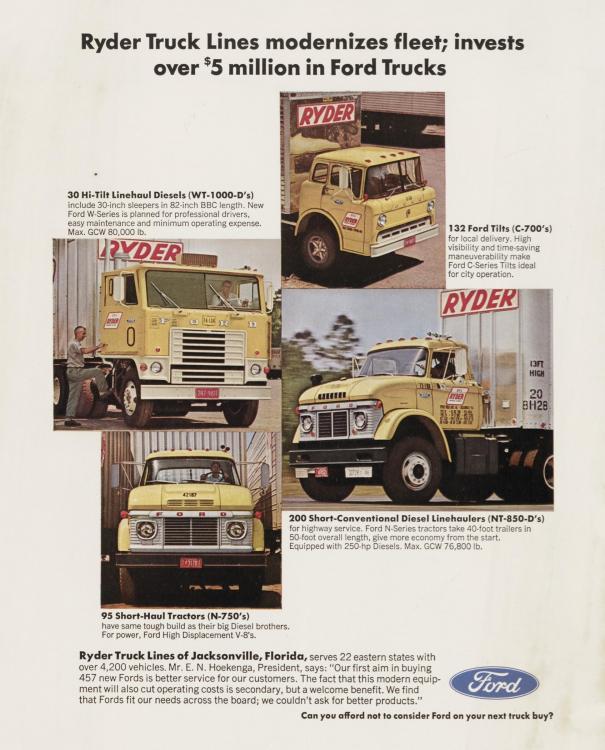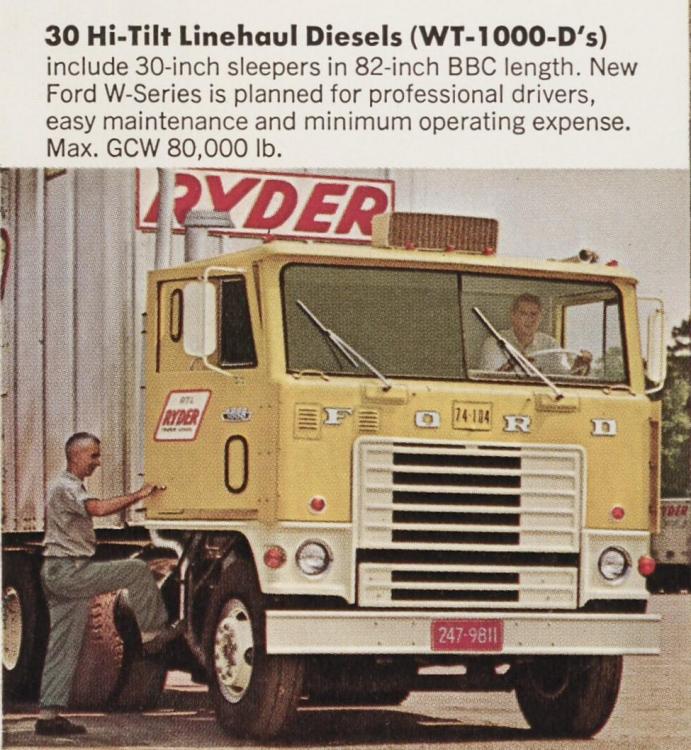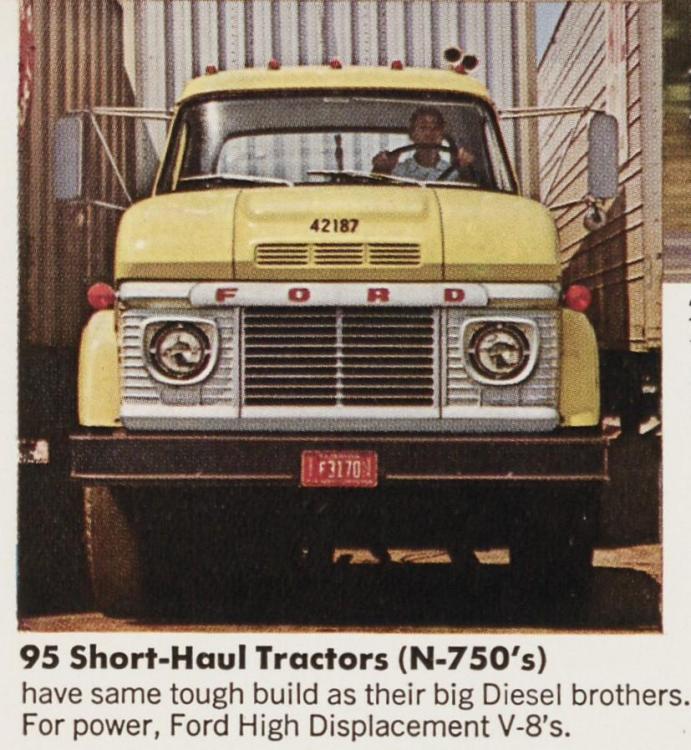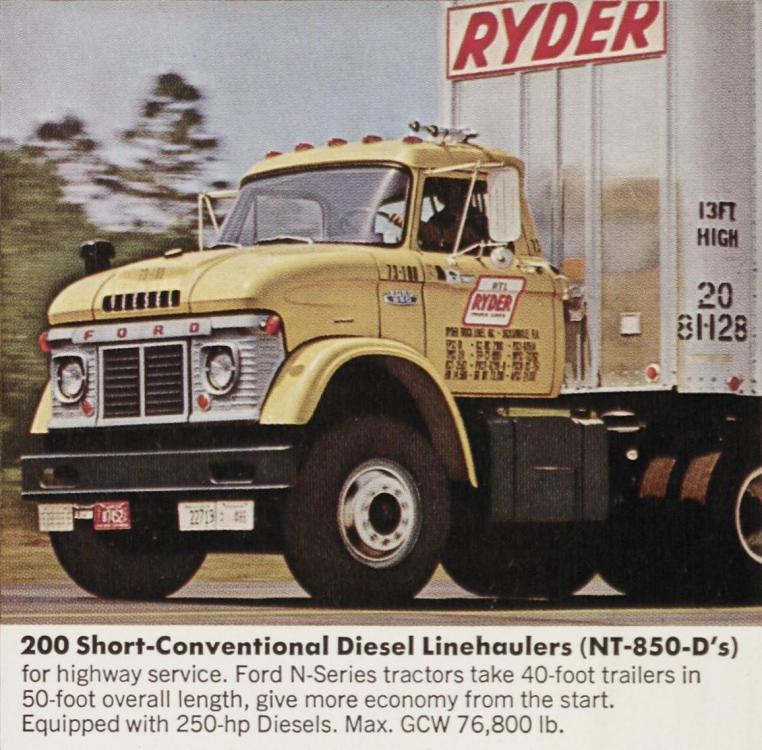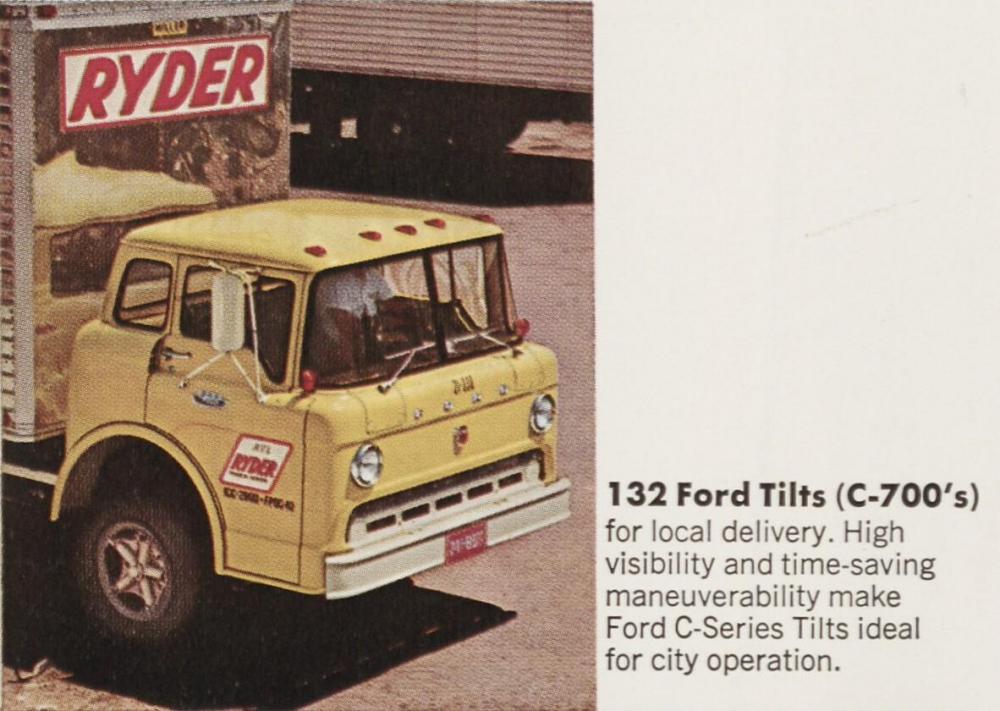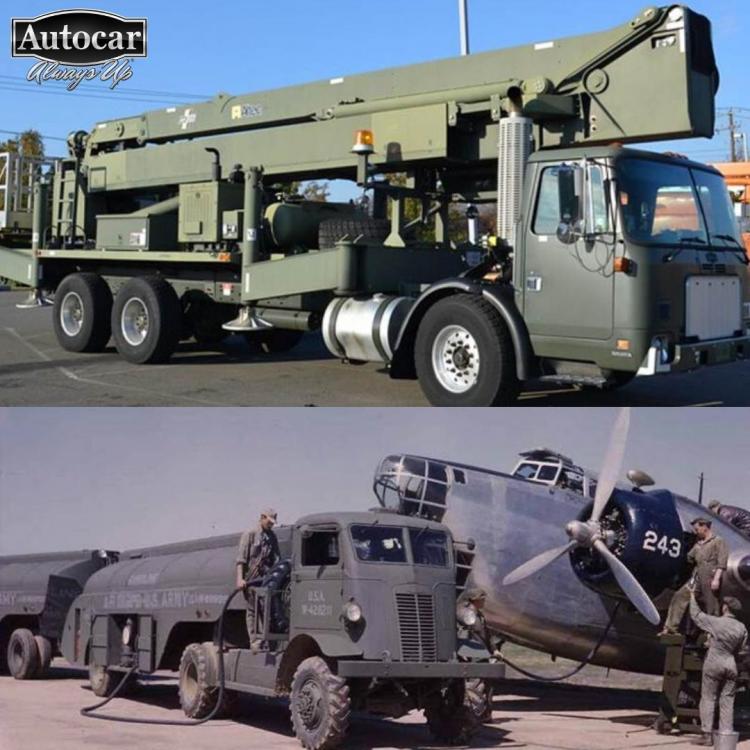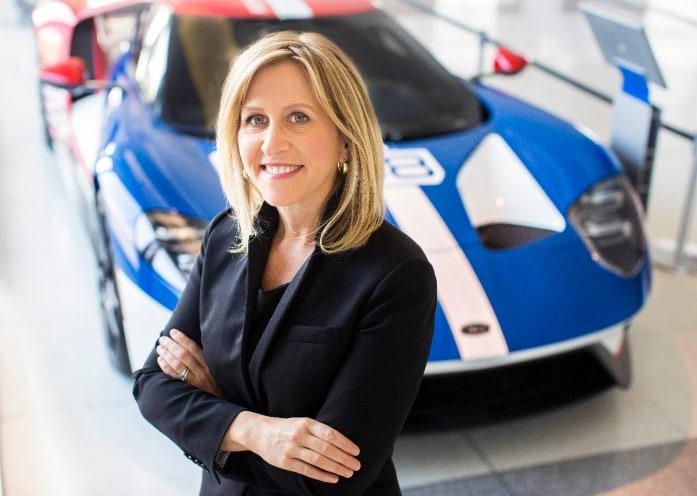
kscarbel2
Moderator-
Posts
18,539 -
Joined
-
Days Won
112
Content Type
Profiles
Forums
Gallery
Events
Blogs
BMT Wiki
Collections
Store
Everything posted by kscarbel2
-
Jay Leno’s Garage - Restoration Blog: April 2020
kscarbel2 replied to kscarbel2's topic in Odds and Ends
I feel Jay's "restoration blog" videos are some of his best. -
- 1 reply
-
- 1
-

-
June contract US oil (WTI*) plunged 30 percent to just $11.88 this morning. * West Texas Intermediate
-
GM Suspends Dividend and Buybacks in Pivot to Cash-Piling Mode David Welch, Bloomberg / April 27, 2020 GM suspended its dividend and the share-buyback program that activist investors fought for in the last half decade as the largest U.S. automaker seeks to preserve cash in the midst of the pandemic shutting down much of the global car industry. GM also said it’s extending its credit line by $3.6 billion to boost liquidity. Monday’s moves follow other cash-preservation measures announced last month, with the company deferring 20% of salaried workers’ pay and cutting top executives’ compensation. Chief Executive Officer Mary Barra first announced a major buyback in 2015 after fending off an activist campaign by a former Treasury Department official who was representing several hedge funds. She expanded the program to as much as $14 billion two years later in the midst of another battle with billionaire hedge fund manager David Einhorn. Barra, 58, has had to shift focus from pleasing investors to preserving cash after closing down most of GM’s plants last month. Ford Motor Co. has already suspended its dividend. GM, Ford and Fiat Chrysler Automobiles NV have all been working toward restarting production in early May, but it’s unclear whether state and local governments will lift their stay-home orders to allow them to do so. The United Auto Workers union also has said it opposes the companies reopening so soon.
-
Chicago R models
kscarbel2 replied to Lmackattack's topic in Antique and Classic Mack Trucks General Discussion
-
When you called Baltimore Mack (aka. Baltimore Potomac Truck Centers), what did they say?
-
Bob, you're not going anywhere soon. You're just getting broken in.
-
McConnell says he favors state bankruptcy over more federal aid Reuters / April 22, 2020 WASHINGTON - U.S. Senate Majority Leader Mitch McConnell on Wednesday opened the door to allowing U.S. states to file for bankruptcy to deal with economic losses stemming from the coronavirus outbreak. McConnell said Republicans would not support giving state and local governments more money in future coronavirus aid legislation, saying those funds could end up being used to bail out state pensions. McConnell said he instead “would certainly be in favor of allowing states to use the bankruptcy route.” Currently, states cannot file for bankruptcy, while cities and other local governments can use Chapter 9 municipal bankruptcy to restructure their debt if allowed by their states. In a letter to Congressional leaders, the National Governors Association on Tuesday reiterated its call for an additional $500 billion to replace revenue lost by the states. The $2.3 trillion federal CARES Act allocated $150 billion to states and local governments exclusively to cover virus-related expenses. Social distancing and stay-at-home orders in place are leading to skyrocketing unemployment and lower consumer spending. As a result, cities and states are starting to project deep revenue losses, particularly for big money generators like income and sales taxes.
-
(Oversight anyone?...........anyone?) BBC / April 22, 2020 Harvard University is refusing President Trump’s demand that the school return nearly $8.6 million in coronavirus relief aid. The president said he was unhappy that the ultra-wealthy Ivy League college had received stimulus money. But the university said the funds would help students facing "urgent financial needs" because of the pandemic. Harvard is rated the world's wealthiest university with an endowment fund valued at $40 billion. At Tuesday's coronavirus briefing, Mr Trump told a journalist: "I want Harvard to pay that money back, OK? If they won't do that, we won't do something else. "They have to pay it back, I don't like it. This is meant for workers, this isn't meant for one of the richest institutions, not only, far beyond schools in the world. They got to pay it back." Harvard acknowledged receiving its $8.6 million through the $2.2 trillion Coronavirus Aid, Relief and Economic Security (CARES) Act. The college says: "Harvard has committed that 100% of these emergency higher education funds will be used to provide direct assistance to students facing urgent financial needs due to the Covid-19 pandemic." The university said it had already provided financial assistance to students with travel, living expenses and online education amid the pandemic. Harvard was not the only elite university to receive a windfall under the stimulus. Princeton, which has a $26 billion endowment, is getting $2.4 million. Yale, with a $30 billion endowment $30 billion, is receiving $6.9 million. The US Senate on Tuesday approved another $330 billion of emergency relief funds to help small businesses stay afloat during the pandemic after the original aid package of $350 billion ran out of money last week. The PPP was designed to help so-called mom-and-pop stores keep staff on the payroll during the coronavirus emergency that has left 22 million American workers claiming unemployment benefits. But instead of going towards such small businesses, nearly $250 billion of the initial stimulus went to publicly traded companies with market values topping $100 million, according to investment bank Morgan Stanley.
-
Bob, if you ever sell it..........please put me at the top of your short list !
-
Autocar is proud to serve the US Military! Supporting the U.S. military in WW2, Autocar manufactured 2,711 model U8144T trucks to be used toward their efforts. A partnership that has stood the test of time. Past, present, and future! Always Up for America's Armed Forces - Autocar Trucks (The aircraft behind the U8144T is a DC2-derived Douglas B-18 "Bolo"...........https://en.wikipedia.org/wiki/Douglas_B-18_Bolo) .
-
Diesel cylinder deactivation achieved in Cummins X15
kscarbel2 replied to kscarbel2's topic in Trucking News
Cummins, Tula to test cylinder deactivation on diesels Richard Truett, Automotive News / April 22, 2020 A cylinder-deactivation system now used in many General Motors gasoline-powered light trucks could be applied to commercial diesel trucks. Tula Technology Inc. and diesel engine manufacturer Cummins plan to begin testing a six-cylinder semitruck diesel engine outfitted with a version of the technology, called Dynamic Skip Fire. The system is being tested first on Cummins 6.7-liter inline turbo six X15 semi-truck engine. If testing yields positive results and it moves into production, the technology likely will appear on semitrucks. There is also a path for commercializing the technology for diesel engines that are used in consumer pickup trucks. The development is notable because it points in a different direction from most of the auto industry at the moment. Powertrain programs around the world are currently focused on electrification strategies. The idea of applying Dynamic Skip Fire to commercial trucks suggests that automakers and truckmakers see future potential in working with internal combustion engines — diesel engines at that — to stake out fuel efficiency gains in the future. "When you look at commercial applications, electrification isn't practical for most long-haul trucks," said Tula CEO Scott Bailey. "From an environmental standpoint, you have to do everything possible to clean up the current engine. "Every major country and region around the globe has NOx and C02 reduction on the books or legislation pending. This is the segment that needs attention first," Bailey said. Engine changes to allow the cylinder deactivation would center around modifying the valvetrain to allow the valves to stay closed when a cylinder is shut down. "It's applicable to any diesel engine, and we intend to apply to it any size engine in any application," Bailey told Automotive News. Tula, a Silicon Valley software controls company, is backed by Delphi Technologies, General Motors and several venture capital firms. Bailey estimates that, if development of Dynamic Skip Fire continues with no snags, the system could be ready for production as early as 2024. He believes the rollout will be driven by tightening by global emissions standards. In the GM vehicles where it is now used, cylinder deactivation is intended to improve fuel economy. For diesel engines, the fuel gains are expected to be more modest — around 1.5 percent to 3 percent. Early testing has shown that a semi-truck such as a Freightliner could save around $1,800 a year in fuel costs. But the reduction in tailpipe emissions is significant. Bailey said that precise management of exhaust gas temperatures allows an engine's aftertreatment systems to operate more efficiently more of the time. "At low loads, we can increase the exhaust temperature by anywhere from 58 to 90 degrees Celsius, which keeps the aftertreatment systems exactly where it wants to be from a peak emissions standpoint. "What we end up is huge reductions on C02 and NOx reductions," he said. In computer testing that simulates EPA drive cycles, a Cummins X15 engine running with Dynamic Skip Fire showed reductions in NOx emissions ranging from 45 percent to 66 percent and C02 reductions of 1.5 percent to 3.7 percent, the company said. -
Tom Quimby, Commercial Carrier Journal (CCJ) / April 22, 2020 The prospect of cylinder deactivation in diesel engines got a lot more interesting today as Cummins and propulsion software company Tula announced a successful demonstration of diesel Dynamic Skip Fire (dDSF) in a Cummins Efficiency Series X15 engine. Silicon Valley-based Tula has seen its Dynamic Skip Fire software controls go to work in gasoline engines including the 2019 Chevy Silverado and 2019 GMC Sierra which GM reported can improve fuel efficiency by as much as 15 percent. But diesel has been a more challenging space for cylinder deactivation technology where fleets are interested in more than just fuel savings. That’s where Dynamic Skip Fire can really shine through its ability to increase fuel savings and lower emissions in larger diesel engines which are up against a growing tide of regulations, particularly in California. “The primary objective has been to evaluate what we will be able to bring to future emissions legislation,” said Lisa Farrell, Cummins’ director of advanced system integration. “The key advantage that this technology brings is to improve after-treatment temperature at low loads which is one of the areas that diesel engines—because they are so efficient—they have very low exhaust temperatures and so they’re very challenged to maintain NOx conversion efficiency at low load and under low load operation. “And so that’s where this technology really shines because it improves the temperature, improves the aftertreatment NOx conversion and also simultaneously gives you a fuel economy benefit,” Farrell continued. Cummins and Tula began working on diesel cylinder deactivation in early 2019. Tula’s proprietary software control algorithms play the role of all-important conductor by managing carefully measured and timed doses of fuel and air mixtures along with controlling precise intake and exhaust valve closings that can shut down unneeded cylinders to save fuel and increase exhaust temperatures in low-load conditions which in turn burns off more NOx. The technology also achieves CO2 reductions through improvements in combustion and reductions in pumping work. “Demonstrating the capability to improve fuel efficiency while also achieving very effective emissions control is extremely important for all diesel engine applications in the future,” said R. Scott Bailey, president and CEO of Tula Technology. “Our partnership with Cummins has given us the opportunity to expand our DSF technology beyond its success in gasoline engines.” But software would be nothing if not for the hardware that it relentlessly seeks to optimize. “We have actually been working with both Eaton and Jacobs Vehicle Systems as suppliers of the hardware that would allow you to deactivate the cylinders on an event by event basis which is one of the requirements to fully optimize with the Tula algorithm,” Farrell explained. So far, testing on Cummins dDSF X15 has been relegated mostly to the lab but plans are in the works to put it to work on the road. “We have a vehicle that has the technology. As soon as we can get into the vehicle to actually test it we’ll be putting miles on it,” Farrell said. As testing continues, performance figures relative to fuel efficiency and emissions will be released. In the meantime, Farrell is feeling confident about Skip Fire technology. “I think it’s a very promising technology and obviously Cummins and Tula are investing a lot in this development program and we wouldn’t be doing that unless we saw a future for it,” she said. That future might also include predictive mapping. “We have done some studies and some DOE projects that focused on autonomous drive, predictive routes and the influence and impact it can have on Dynamic Skip Fire techniques,” said John Fuerst, Tula’s senior vice president of engineering. “It was a gasoline-focused study but your hunch is right on. There really are significant benefits if you can think about it just in engine parameters in advance and not just reacting instantaneously but having a broader strategy to take advantage of the various parameters that you can adjust. So I think it’s an area for future study in the diesel arena much as we’ve done so far on the gasoline side. But it’s work to be done in the future.”
-
"There's a possibility that the assault of the virus on our nation next winter will actually be even more difficult than the one we just went through. And when I've said this to others, they kind of put their head back, they don't understand what I mean. We're going to have the flu epidemic and the coronavirus epidemic at the same time." CDC Director Robert Redfield
-
Reuters / April 21, 2020 Lawmakers and former officials are making a last ditch push to persuade the Trump administration to halt plans to invest billions of federal employee retirement dollars in Chinese companies. At issue is whether administrators of the Thrift Savings Plan (TSP), a retirement savings fund similar to a 401(k) for federal employees and members of the military, should allow its $50 billion international fund to track an index that includes China-based stocks of companies under scrutiny in Washington. Among the Chinese companies in the index that have drawn the ire of some in Washington who see China as America’s biggest economic and geopolitical threat is surveillance firm Hangzhou Hikvision Digital Technology which was placed on a trade blacklist last year. The fund would also invest in telecoms equipment company ZTE , which was penalized by the U.S. government for violating U.S. sanctions. “Are we very soon going to witness ... federal employees ... being, in effect, unwittingly compelled to fund with their retirement dollars a number of Beijing’s most egregious corporate national security and human rights abusers?” asked Roger Robinson, a former White House official in the Ronald Reagan administration. The White House and the Department of Labor refused requests for comment. A memo dated March 7 argued that if Trump did not act, by replacing FRTIB board members or through an executive order, his critics would claim Trump took no action to avoid “federal employees being compelled to invest in Chinese and Russian companies that have undisclosed material risks due to their roles in threatening our national security.” Meadows, who had sponsored companion legislation to Rubio’s bill in the House of Representatives, did not respond to a request for comment through the White House. Top lawmakers have raised the issue directly with the administration, according to people familiar with the matter. Rubio discussed the issue with Trump in the last few months, a congressional aide said. In a letter dated April 6, Republican congressmen Jim Banks called on Department of Labor Secretary Eugene Scalia to explain how the agency plans to inform investors of the risks of owning shares in companies that don’t comply with U.S. financial disclosure requirements and the implications of investing in firms that are under U.S. sanctions.
-
Reuters / April 21, 2020 FRANKFURT -- Daimler and Volvo Trucks have agreed to join forces to develop, produce and sell fuel cell systems for heavy trucks. "The common goal is for both companies to offer heavy trucks with fuel cells for demanding long-haul applications in series production in the second half of the decade," Daimler said in a statement on Tuesday. The joint venture agreed by the two companies will operate as an independent and autonomous entity, with Daimler Truck and the Volvo Group continuing to be competitors in all other areas of business, the companies said. "Joining forces will decrease development costs for both companies and accelerate the market introduction of fuel cell systems in products used for heavy-duty transport and demanding long-haul applications." Volvo will acquire 50 percent in the joint venture for around 600 million euros ($650 million), the companies said. Daimler trucks will bring together all of Daimler's fuel cell activities in a new fuel cell unit, including those of Mercedes-Benz Fuel Cell GmbH. Automotive and non-automotive usage are also part of the new joint venture's scope. The preliminary agreement between the two companies is non-binding, with a final deal expected by the third quarter and closing before the end of 2020, the companies said.
-
Toilet paper oil filter elements. It's been years since I recalled that.
-
Scores of US public companies take small business rescue funds (Oversight anyone? anyone???) Financial Times / April 21, 2020 More than 80 publicly listed companies have tapped the US Treasury’s $349 billion bailout fund for keeping small businesses afloat through the economic shutdown. The bailout scheme, known as the Paycheck Protection Program (PPP), was fully subscribed last week with many small entrepreneurs unable to secure funding before the first allocation was spoken for. “Public companies that have access to other sources of money should not be using this,” said Charles Elson, a corporate governance expert at the University of Delaware. “Small businesses need this pot to survive.” The Paycheck Protection Program was supposed to infuse small businesses, which typically have less access to quick cash and credit, with $349 billion in emergency loans that could help keep workers on the job and bills paid on time. But over 80 companies that received the aid were publicly traded, and some had market values well over $100 million. And 25% of the companies had warned investors months ago, while the economy was still good, that their ability to remain viable was in question. Thousands of regulatory filings indicate that over 80 companies are recipients of a combined $300 million in low-interest, taxpayer-backed loans. Ohio-based biotech company Athersys raised almost $60m in a stock offering on Monday after its shares have nearly doubled so far in 2020. Still, the company secured more than $1m through the PPP on Wednesday. The company refused to comment. Nikola Motor, whose financial backers include the asset management giant Fidelity and the hedge fund ValueAct, secured its $4bn valuation when it announced in early March that it would merge with black-check company VectoIQ. Yet it borrowed $4m from the PPP this month. Nikola Motor refused a request for comment.
-
Now Brent has fallen to $15.98, the lowest price in 21 years. Nearly 40 million Saudi Arabian barrels are on their way to U.S. shores, adding to the tens of millions already in storage here. That delivery is probably going to be the final dagger in the heart of the U.S. shale oil industry. The president should be enacting import tariffs on foreign oil, so as to protect the American oil industry.
-
West Texas Intermediate (WTI) crude oil has plunged down today to minus $40.32 a barrel. https://www.bloomberg.com/quote/CL1:COM
-
Paint code crossover
kscarbel2 replied to bwoolbr's topic in Exterior, Cab, Accessories and Detailing
Mack dealers never used paint codes, but rather Mack part numbers for the Kirker-produced enamel paints they sold. The base number is 312SX The central number indicated color The "P" suffix indicated the container size. For example, 312SX18P2 Mack standard (exterior) green / gallon 312SX18P6 Mack standard (exterior) green / aerosol spray can 312SX19P2 Mack (B-model) interior green / gallon -
Ford's new North America chief targets 10% margins Michael Martinez, Automotive News / April 20, 2020 DETROIT — Lisa Drake guided the launch of Ford's most profitable vehicle, the F-150 pickup, when the Dearborn Truck Plant opened in 2004. Starting next month, as Ford's new North America COO, Drake will be tasked with guiding the automaker back to double-digit margins in its most profitable business region. Drake, 47, was promoted to the newly created role last week as part of a shakeup of Ford's North American leadership team aimed at improving operational execution. Drake, who will retain her previous duties as vice president of global purchasing, will report to Kumar Galhotra, who is now Ford's president of the Americas and the International Markets Group. Ford says Drake will "bring enhanced focus to product launches, warranty cost reduction and material cost improvements." Those areas were weaknesses last year that led to a disappointing fourth quarter and dinged the company's full-year profits. She also will lead Ford's charge to increase its North American operating margin to 10 percent. Ford has used "return to 10" as a rallying cry in recent years but has not put a time frame on when it might accomplish that goal. Drake joined Ford in 1994 after earning a mechanical engineering degree from Carnegie Mellon University. She has worked on product development teams for the Lincoln MKC and Navigator and the Ford Ranger, Explorer, Expedition and Super Duty, as well as some of Ford's early hybrid vehicles, including the Fusion, MKZ and C-Max. She led development of the Focus Electric and Transit Connect Electric. "There's something that gets in your blood when you work at Ford," she says. "The funny thing was, between the truck and hybrid team, it's the same feeling — the feeling that you're working on these products that are so distinctly designed to help people in their work and in their lives." In 2004, Drake led the product and launch team for the 11th-generation F-150 during construction of the Dearborn Truck Plant at the Ford Rouge Center. "I got an appreciation of what it takes for the manufacturing arm to build a plant, train a work force and make trucks every minute," she said. Drake joined Ford's purchasing team in 2013 and was named vice president of global purchasing in 2017. In that role, Drake is responsible for all management procurement functions. Ford COO Jim Farley has praised Drake, noting that the purchasing team was under added pressure to save money as a result of the coronavirus pandemic. "We are moving with a renewed sense of urgency to improve the fitness of the business and improve our launches, while at the same time modernizing Ford in a way that plays to our strengths," Farley said last week. "That means putting the right team of global leaders in place, streamlining the way we work, embracing the power of connectivity, data and AI, and turning our leadership in commercial vehicles into a dedicated growth business." In addition to Drake, Ford promoted Ted Cannis, who previously led the Team Edison autonomous and electric vehicle unit that produced the Mustang Mach-E, to a new position of general manager of commercial vehicles for the U.S. and Canada. The automaker also hired Gil Gur Arie, a retired colonel from the Israeli Military Intelligence Corps, to work in data insight and analytics, and beefed up the team surrounding Hau Thai-Tang, its chief product development and purchasing officer. The changes are all effective May 1. .
BigMackTrucks.com
BigMackTrucks.com is a support forum for antique, classic and modern Mack Trucks! The forum is owned and maintained by Watt's Truck Center, Inc. an independent, full service Mack dealer. The forums are not affiliated with Mack Trucks, Inc.
Our Vendors and Advertisers
Thank you for your support!


